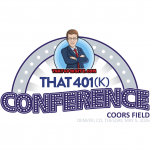On a client call the other day, we were knee-deep in the usual chaos that comes with transitioning to a new TPA, mapping plan provisions, reconciling documents, and making sure the new prototype plan doesn’t trip over the old one. These calls are a blend of ERISA minutiae and emotional endurance tests.
Then came the sticking point: the automatic enrollment percentage. The old plan defaulted participants at 1%, but the new TPA’s system didn’t like anything under 3%. HR hesitated. “We’ve always done 1%. I’m not sure our employees will go for 3%.”
That’s when I said it: you know your employees better than anyone, even better than an ERISA attorney.
Automatic enrollment isn’t just a checkbox in a plan document; it’s behavioral finance in action. Whether the number starts at 1% or 3% changes how people view saving. One feels like a token effort, the other like a meaningful start. But culture matters, and no one understands the culture of a company better than the people inside it.
Sometimes, plan design comes down to principle. You pick your hills. For me, this one was worth dying on, not because of 1% or 3%, but because ownership matters. A plan sponsor who listens to their workforce and stands by what works for them? That’s fiduciary leadership in its purest form.
At the end of the day, TPAs, attorneys, and recordkeepers all provide structure and compliance. But the sponsor is the heart of the plan. You know your people, their fears, habits, and paychecks, better than any spreadsheet or prototype document.
And that’s why, when it comes to the right default percentage, the real answer isn’t in ERISA Section 404(c). It’s in the breakroom conversations, the payroll deductions, and the quiet trust between employer and employee. That’s the hill I’ll always stand on.







